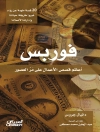The purpose of this book is three-fold. The first purpose is to posit that the fundamental substance of the universe is energy, and that energy is required (consumed) for any material transformation, or information transmission. The labor theory of value, articulated by the physiocrats and elaborated by Adam Smith, David Ricardo, J.B. Say and Karl Marx was a rough first approximation of the value creation process, in the 17th and 18th centuries, but is now obsolete. Labor is now (mostly) performed by machines, not by humans (or animals).
The second aim of the book is to argue that the economy is a living (open) system — an “island of order” –that exists far from both thermodynamic and economic equilibrium. Order is achieved by dissipating a flux of exergy. Economists frequently emphasize the equilibrium assumption, introduced originally by Leon Walras in 1854. But in reality, biological systems and human social systems are dissipative cycles, far from both thermodynamic equilibrium, and economic equilibrium, yet stable and capable of evolution, driven by the solar exergy flux.
The third aim of the book is to re-emphasize, that – being open – the economic system cannot be regarded as a collection of individual competitive utility-maximizing transactions. There are, increasingly, important possibilities for cooperation instead of competition. Moreover third party effects, both “bads” (externalities) and the “public good” (happiness) – need to be incorporated into the socio-economic decision making process.
Table of Content
1. From pre-history to the Crusades.- 2. From the Crusades to the Renaissance.- 3. The Protestant work ethic and the rise of capitalism as Gods work.- 4. The Enlightenment: From Leonardo to Galileo.- 5. The rise of the East India Trading Companies.- 6. The “glorious revolution” and the Bo E.- 7. Laissez-Faire and John Law’s premature invention of “futures”.- 8. Classical economics as moral philosophy.- 9. Bentham and utilitarianism.- 10. The rise of physics: from Newton to Einstein.- 11. Energetics.- 12. Evolutionary theory and genetics.- 13. Entropy, exergy, information and complexity.- 14. The “marginal revolution” in Economics.- 15. Socialism and the Welfare State.- 16. Keynes v. Hayek and the monetarists.- 17. The future of economics and the economics of the future.
About the author
Professor Ayres holds a Ph D in Mathematical Physics from Kings College, University of London, a MSc in Physics from the University of Maryland and a BA, BSc from the University of Chicago. He is currently Emeritus Professor of Economics and Political Science and of Technology and Operations Management at INSEAD, the international graduate business school.
He joined INSEAD in 1992, becoming the first Sandoz (now Novartis) Chair of Management and the Environment, as well as the founder of CMER, Center for the Management of Environmental Resources. He directed CMER from 1992-2000. Since retirement he has been a visiting professor at Chalmers Institute of Technology in Sweden (where he was also a King’s Professor) and Institute Scholar at the International Institute for Applied Systems Analysis (IIASA) in Austria. He remains active, producing publications on topics ranging from Industrial Metabolism and Industrial Ecology, through Environmental Policy and Environmental Economics, to Energy. Professor Ayres is the author or coauthor of 22 books, most recently including The Economic Growth Engine (2009, with Benjamin Warr), Crossing the Energy Divide (2009, with Edward Ayres), Bubble Economy (2014), Energy, Complexity and Wealth Maximization (2018), On Capitalism and Inequality (2020), and The History and Future of Technology (2021).












